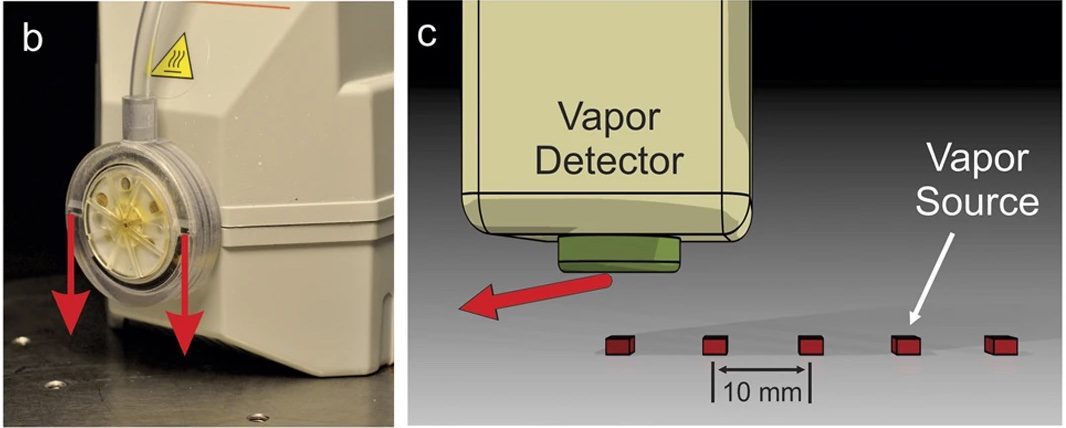The ventilation system from the National Institute of Standards and Technology fits onto commercial detectors and both inspires and expires air to improve sampling flow dynamics.
Benefits
- Enhances performance
- Improves safety
Applications
- Safety
- Surveillance
The Challenge
Chemical sensors such as those that detect explosives rely on inefficient approaches to sampling. Stationary sensors utilize passive sampling, which depends on air flow in the environment to carry compounds to them. Other sensors continually inspire air but can only sample gas in their immediate vicinity.
Innovation Details
The mechanical “sniffing” device fits over the inlet nozzle of a standard explosive detector and uses a separate ventilation system for sampling. The device not only inspires air but also expires it through two lateral holes, which create lateral air jets that help draw vapor from farther distances in front of the inlet nozzle to the sensor. The improved flow dynamics increase the aerodynamic reach of the sensor, improving its ability to detect trinitro-toluene (TNT) by 16-fold at a distance of 4 centimeters from the sensor’s inlet.
Biological Model
Dogs are well-known olfactory detectives, with some able to distinguish a single molecule among trillions. One of their secrets is that when a canine sniffs, it rapidly inhales and exhales. During exhalation, air jets downward and out to the side, which flow modeling reveals actually pulls air from in front of the dog closer to its nose, allowing it to sniff scents from farther away.
This content marked as “Google Youtube” uses cookies that you chose to keep disabled. Click here to open your preferences and accept cookies..






